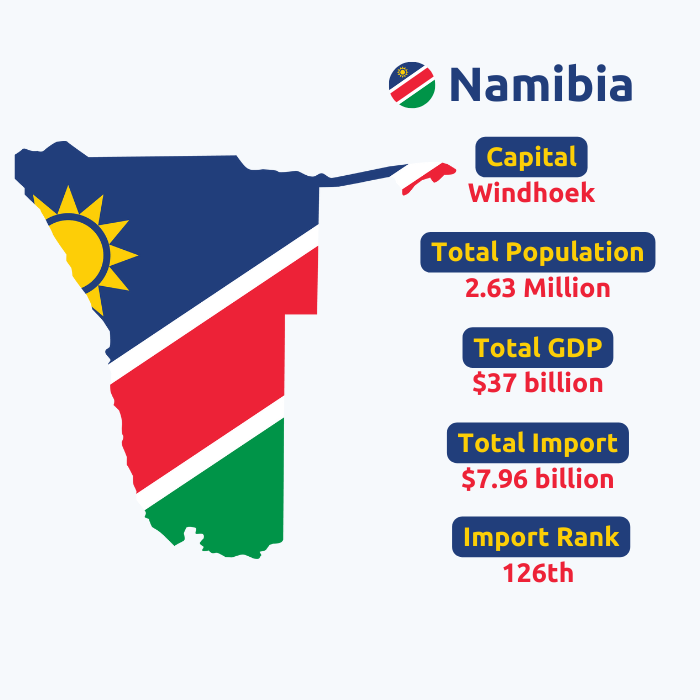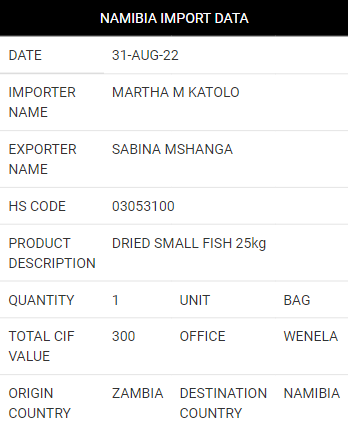Namibia Import Data
The Republic of Namibia is another name for Namibia. Southern Africa is the location of it. Namibia borders several nations and oceans, including Botswana to the east, Zambia and Angola to the north, and the Atlantic Ocean to the west. The driest nation in sub-Saharan Africa is Namibia. Among the top nations in the world, Namibia imports the rawest copper. Based on Namibia trade data, Namibia ranked 127th out of 226 nations in total imports. Namibia, a country on the southwestern coast of Africa, has a thriving economy that heavily relies on imports. To make informed business decisions, traders and investors need access to Namibia import data. Namibia import data plays a vital role in helping businesses make informed decisions, mitigate risks, and identify opportunities in the import market. This data provides valuable insights into the country's import trends, top import partners, and specific product categories.
According to Namibia's import data, Namibia's imported goods are worth $7.1 billion in 2023, a 9% decline from the previous year. Namibia’s total GDP is $31 billion, and a GDP import share of 66.2%. Mineral fuels and oils are Namibia’s biggest import, while South Africa is its biggest import partner, as per Namibia import statistics. Namibia is also part of major trading blocs such as SACUM and WTO. Let us now explore the significance of Namibia's import data in 2023 and how it can benefit businesses.





